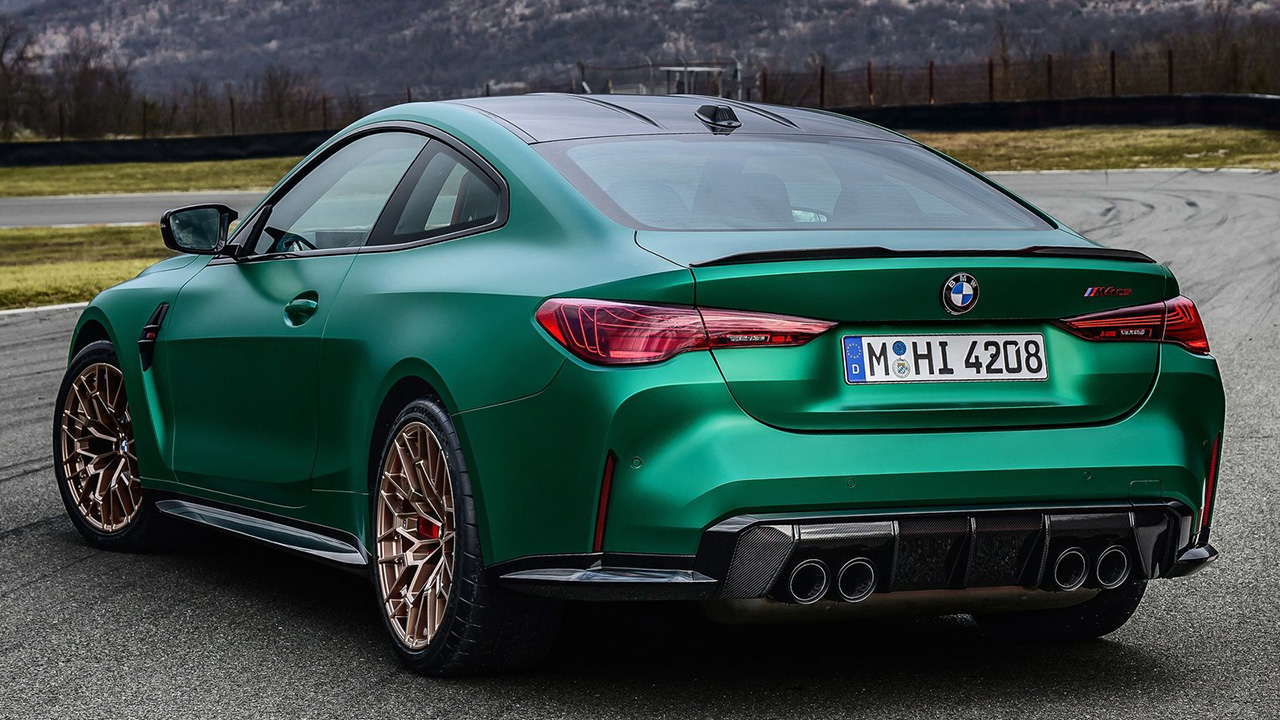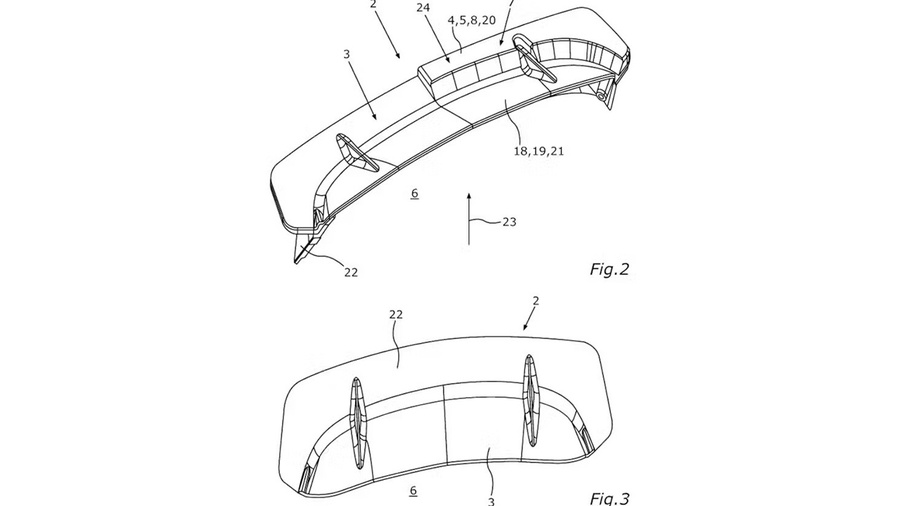The materials remain unspecified, but BMW's experience with fiber-reinforced plastics and CFRP (as used in M Performance Parts) suggests potential use. The patent mentions thermoplastic polyurethane and 3D printing, aiming for cost-effective mass production.
How Does It Work?
Compressed air is necessary, requiring a compressor pump and storage tank. A rigid spoiler element supports the inflatable component, maintaining aesthetics when not in use. The patent states the air could be pressurized up to 50 times atmospheric pressure. If outlets are near the diffuser, the deflating spoiler might help with airflow separation, similar to the Bugatti Tourbillon's exhaust system.
The patent shows a split in the middle of the air guide device, suggesting individual aero management strategies based on yaw angle, like the Pagani Huayra. It could be activated by acceleration, speed, steering angle, suspension settings, or road gradient, allowing nearly infinite air deflection angles, potentially surpassing the Porsche 911 GT3 RS's aero systems.
BMW's exploration of inflatable spoilers instead of hydraulic or electronic systems is due to simplicity. Hydraulics and electric motors add weight and complexity, while a compressor-based system might be lighter and easier to maintain.
Deployable spoilers have shape and size limits. An inflatable system could alter the spoiler's shape and size based on aero demands by adjusting system pressure or filling different chambers within the spoiler. Whether this innovation will reach production is uncertain, but in an era of heavy battery packs, efficiency improvements are crucial.
Source: CarBuzz


